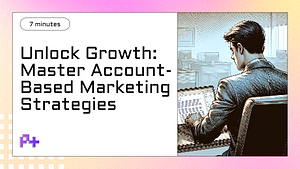What is a Social Media Calendar?
A social media calendar is a strategic tool that helps individuals and businesses plan, organize, and schedule their social media content in advance. By mapping out posts for various platforms, a social media calendar not only streamlines the content creation process but also ensures that messaging is consistent across different channels. This tool typically includes details such as post dates, times, platforms, content types (e.g., images, videos, articles), and any relevant hashtags or links. By using a social media calendar, marketers can maintain a cohesive brand voice and effectively engage their audience.
The primary benefit of a social media calendar is its ability to enhance efficiency and productivity. When content is planned ahead of time, it reduces the last-minute scramble to create posts, allowing teams to focus on crafting high-quality content that resonates with their audience. Additionally, a well-structured calendar enables businesses to align their social media strategy with key marketing initiatives, seasonal trends, or important events. This foresight allows for timely posts that can capitalize on popular topics, engage followers, and even drive traffic to websites.
Moreover, a social media calendar is invaluable for analyzing performance metrics. By keeping track of what content was posted and when, businesses can assess which types of posts yield the best engagement and conversion rates. This data-driven approach facilitates ongoing refinement of social media strategies, enabling marketers to adapt their content based on audience preferences and behaviors. In summary, a social media calendar is an essential component for any effective social media strategy, providing structure, enhancing productivity, and fostering continuous improvement through data analysis.
Benefits of Using a Social Media Calendar
A social media calendar is an essential tool for businesses and individuals looking to streamline their social media strategy. One of the primary benefits of using a social media calendar is improved organization. By planning and scheduling content in advance, marketers can ensure that their posts are timely, relevant, and aligned with their overall marketing goals. This organized approach allows for a more strategic allocation of resources, helping to avoid the last-minute scramble to create and publish content. Additionally, a well-structured calendar can help teams collaborate more effectively, ensuring that everyone is on the same page regarding content themes, campaigns, and posting schedules.
Another significant advantage of utilizing a social media calendar is the ability to maintain consistency across platforms. Regular posting is crucial for building brand awareness and keeping your audience engaged. By mapping out content in advance, brands can ensure that they consistently share valuable and engaging material, which reinforces their messaging and strengthens their online presence. This consistency not only helps nurture relationships with existing followers but also attracts new ones, as potential customers are more likely to engage with brands that have a clear and active social media voice.
Finally, a social media calendar enables data-driven decision-making. By analyzing the performance of past posts, marketers can identify which types of content resonate most with their audience. This insight allows for the optimization of future posts, leading to higher engagement rates and better overall performance. With a calendar, businesses can experiment with different content types and posting times, ultimately refining their strategy based on real-world data. This analytical approach not only boosts the effectiveness of social media efforts but also maximizes the return on investment, making a social media calendar an invaluable asset for any digital marketing strategy.
How to Create a Social Media Content Calendar
Creating a social media content calendar is an essential step for any brand looking to enhance its online presence and engage its audience effectively. The first step in crafting your calendar is to define your goals and target audience. Knowing what you want to achieve—whether its increasing brand awareness, driving traffic to your website, or boosting engagement—will guide your content creation. Additionally, understanding your audiences preferences and behaviors on social media platforms will help you tailor your posts to their interests, ensuring that your content resonates well and encourages interaction.
Once youve established your objectives and audience, its time to brainstorm content ideas relevant to your brand and industry. Take into consideration seasonal trends, upcoming events, and holidays that might influence your content themes. Aim for a diverse mix of content types, such as promotional posts, educational articles, user-generated content, and engaging visuals, to keep your audience interested. Organizing these ideas into a structured format can be done using a simple spreadsheet or specialized tools like Trello or Asana. This organized approach not only helps you visualize your posting schedule but also allows you to maintain a consistent posting frequency, which is crucial for building a loyal following.
Finally, implementing your social media calendar requires regular monitoring and adjustments based on performance analytics. Track key metrics such as engagement rates, click-through rates, and follower growth to determine which types of content resonate most with your audience. This data-driven approach will enable you to refine your future content strategies, ensuring that your social media calendar evolves along with your audiences preferences. By taking the time to create and manage an effective social media content calendar, you can streamline your marketing efforts and maximize the impact of your social media presence.
Types of Social Media Content Calendars and Templates
When it comes to managing your social media strategy, understanding the different types of social media content calendars is essential for maximizing engagement and efficiency. A social media calendar is a tool that helps you plan, organize, and execute your content across various platforms. There are primarily three types of social media calendars: the monthly calendar, the weekly calendar, and the daily calendar. Each type serves a specific purpose and can be tailored to fit the unique needs of your brand or business.
The monthly social media calendar is ideal for brands looking to establish a long-term strategy. This type of calendar allows you to plan out your content themes, campaigns, and key dates, such as holidays or product launches, well in advance. By scheduling posts for the entire month, you can ensure a consistent brand message and anticipate important events. Many brands also use templates for monthly calendars, providing a structured format that includes space for post ideas, visuals, and links to relevant content, making it easier to keep track of your overall strategy.
On the other hand, weekly and daily social media calendars offer more granular control over your content. A weekly calendar allows you to focus on immediate goals and adjust your strategy based on real-time analytics and audience engagement. It typically includes specific posts, captions, and hashtags, which can help streamline the content creation process. Daily calendars, while more detailed, are particularly useful for brands that post multiple times a day or want to engage in timely conversations. Utilizing templates for these calendars can significantly enhance your productivity, as they often include suggested posting times and content types, ensuring that your social media presence remains dynamic and responsive to audience needs.
Recommended Social Media Calendar Tools and Apps
When it comes to managing your social media strategy effectively, having the right tools at your disposal is essential. A social media calendar not only helps you organize your content but also ensures that you maintain a consistent posting schedule across various platforms. Among the top recommended social media calendar tools, Hootsuite stands out for its all-in-one capabilities. It allows users to schedule posts, track engagement, and analyze performance metrics, making it an excellent choice for businesses looking to streamline their social media management. Additionally, Hootsuite’s user-friendly interface makes it accessible for both beginners and seasoned marketers.
Another popular option is Buffer, which offers a straightforward approach to scheduling posts. Buffer’s social media calendar feature allows you to plan your content visually, making it easy to see what’s coming up and adjust as necessary. The platform also provides analytics to help you understand which posts resonate most with your audience. For those who are looking for enhanced collaboration features, Buffers team functionalities allow multiple users to work on content creation and scheduling, ensuring that everyone is on the same page.
For teams seeking a more visual and collaborative approach, Trello is an excellent choice. While not exclusively a social media tool, Trello can be customized to create a social media calendar that works for your specific needs. By using boards, lists, and cards, you can map out your content strategy visually, assign tasks, and set deadlines. This flexibility makes Trello particularly appealing for creative teams that thrive on collaboration. No matter which tool or app you choose, incorporating a social media calendar into your strategy is a crucial step toward maximizing engagement and ensuring your content aligns with your brand goals.



